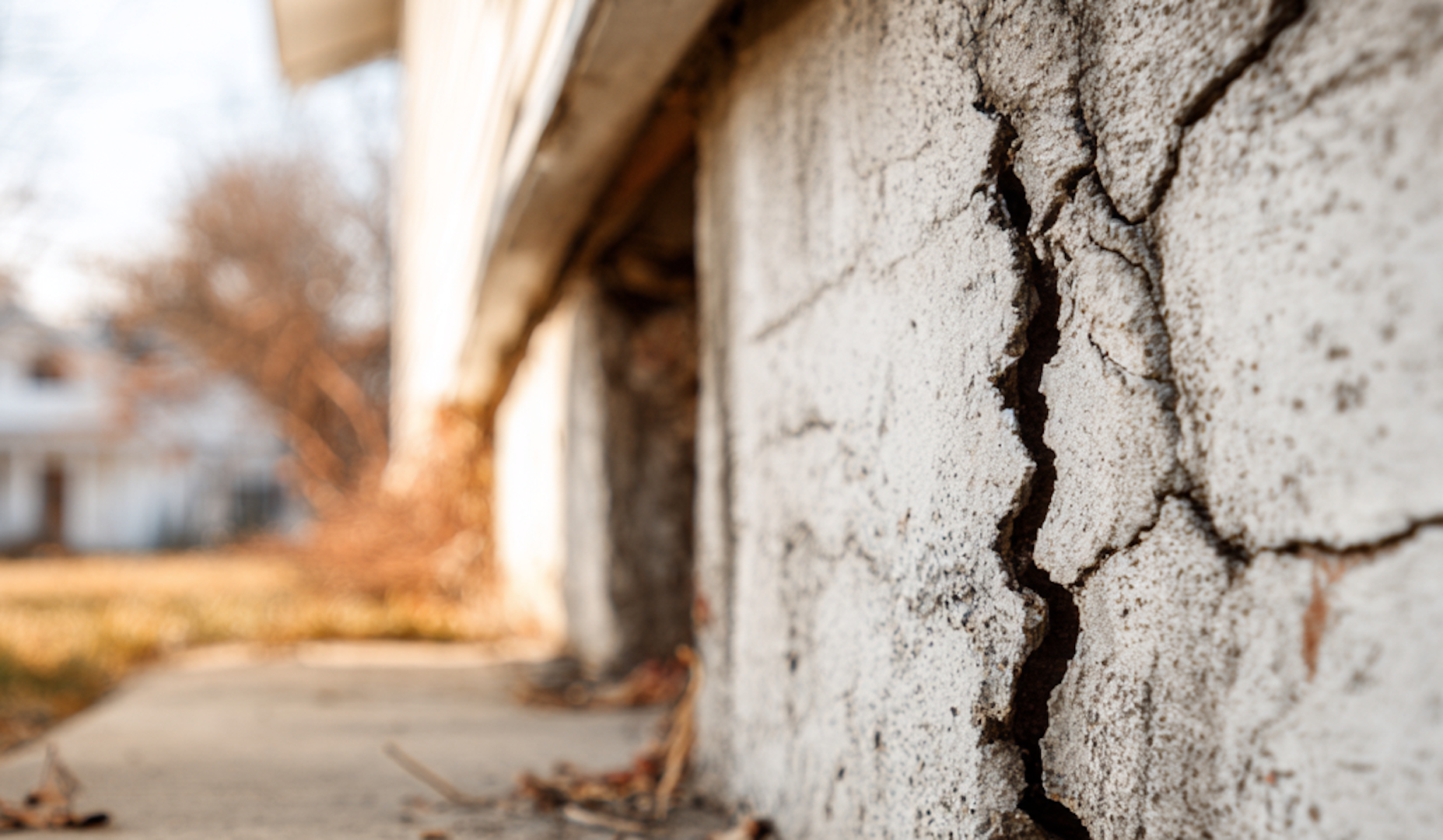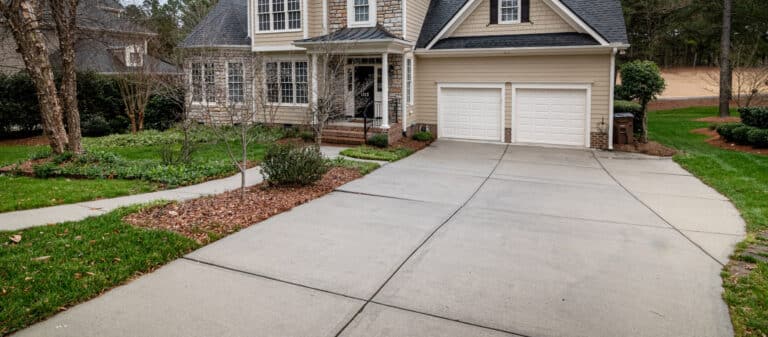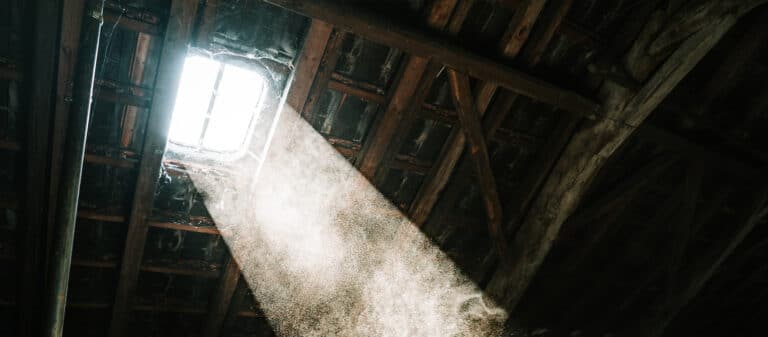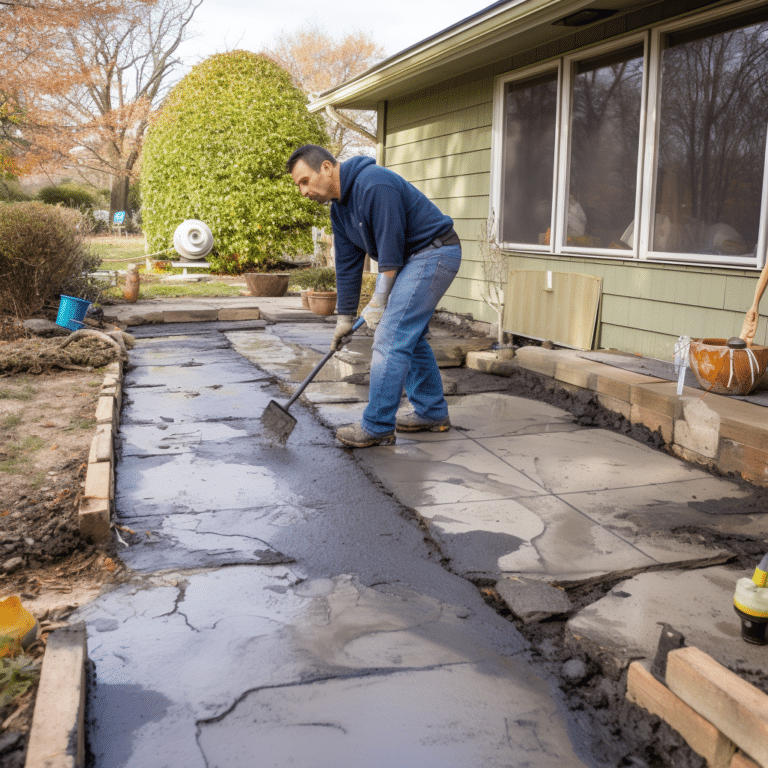The foundation of a home may be the primary load-bearing element, but did you know it’s responsible for about 15% of the home’s weight itself?
All it takes is a single void, poor soil compaction, or water to seep underneath your foundation to accelerate the process of settling.
Unfortunately, foundation issues can quickly compound, leading to cracks in your walls, leaning chimneys, and drainage issues that can further compound.
Fortunately, most foundation issues can be prevented with proper care and by addressing problems early before they grow out of control.
This guide will cover seven essential tips to help repair foundation damage, maintain your property’s value, and protect your family’s safety.
1. Fill Voids that Form Beneath the Foundation
The number one cause of foundation issues in Northeast Pennsylvania is related to water erosion, which can form voids and expand through rapid freeze-thaw cycles. Unfortunately, there is no way to prevent void formation other than filling it as quickly as possible to avoid future problems.
Fortunately, there is an affordable way to fill voids using polyfoam concrete lifting tactics. A qualified contractor will drill down beneath the foundation and fill the void with a self-expanding foam that is strong enough to hold the foundation for decades without eroding or cracking.
If you spot sudden signs of foundation cracks or failure unrelated to normal settling, you are most likely dealing with a new void beneath the slab.
Polyjacking is the most cost-effective option to address early foundation problems related to void formation beneath the slab.
Tip: Avoid mudjacking, which is marketed as a cheaper alternative but only lasts for a few years.
2. Control Drainage Around Your Home
Poor drainage can exacerbate foundation problems in NEPA, allowing water to erode the surrounding soil and form voids beneath the slab.
When water pools near your foundation, it can saturate the soil, causing it to expand, shift, or erode, placing uneven pressure on your home’s base.
First, clean and extend your gutters and downspouts so that snow and rainwater are discharged at least 5–10 feet from your home.
If that is not enough to fix drainage issues, you may need to grade the soil away from your foundation (at a minimum 6-inch slope over 10 feet). A cost-effective alternative may be to install French drains or a dry well in areas where water tends to pool.
Tip: If you notice water stains on your basement walls or standing puddles after rain, it’s time to address drainage immediately.
3. Install a Sump Pump in Flood-Prone Areas
A sump pump can be a vital defense tool if your property has a history of flooding or water intrusion, especially in elevated areas like Clarks Summit, Mountain Top, or Dallas. Sump pumps remove excess water beneath your basement or crawl space before it causes structural damage.
Modern systems can be paired with battery backups to ensure they operate during power outages, a common occurrence during Nor’easters or heavy spring storms.
Bonus Tip: Install a water alarm near the sump pump in your basement for early leak detection.
4. Trim Tree Roots Away from Your Foundation
Tree roots naturally seek moisture; planted too close to your home, they can grow underneath the slab and disturb the soil. They can displace the foundation or invade water lines and drainage systems.
To reduce the risk of foundation issues related to tree roots, try:
- Planting large trees at least 15–20 feet from your foundation.
- Using root barriers if trees are already established nearby.
- Regularly inspecting for signs of root intrusion, such as uneven floors or cracks in exterior walls.
Common problem trees in Northeast Pennsylvania include maple, oak, and willow due to their aggressive root systems.
5. Seal Foundation Cracks Early
Even small cracks in your foundation can allow water intrusion, pests, or air leaks. Over time, they can widen due to frost heaving or hydrostatic pressure, leading to bigger structural issues.
To prevent cracks from expanding, seal them with an epoxy or polyurethane crack sealant.
Consult a foundation professional for anything wider than ¼ inch or that grows over time.
6. Avoid DIY Concrete Pouring Near the Foundation
Many homeowners pour small patios, walkways, or driveways close to the foundation. While convenient, improperly poured slabs without proper expansion joints or drainage can push against your foundation and cause pressure cracking.
Best practices for pouring concrete slabs near foundations include:
- Ensuring proper slope and drainage away from the home.
- Using a bonded contractor familiar with freeze-thaw resistant concrete for Northeast PA climates.
- Adding expansion joints between the slab and your home’s foundation.
7. Watch for Signs of Settling
Some settling is normal for homes, especially within the first few years. But beyond a certain point, it can indicate serious foundation issues.
Common signs of abnormal settling in NEPA homes include:
- Doors and windows that stick or won’t close properly
- Cracks in drywall above windows or in corners
- Gaps between your foundation and siding or brick
- Sloping or bouncy floors
If you notice any of these signs, contact a foundation repair expert for an evaluation. Addressing problems early often means a quicker, less expensive fix.
Repairing Foundation Issues Early Pays Off
Foundation issues are rarely limited to just the foundation and can quickly damage your walls, floors, roof, and surrounding landscape if left unchecked. Addressing issues early, such as void formations and poor soil compaction, can greatly extend the life of your foundation and save you tens of thousands of dollars in repairs.
Furthermore, simple home maintenance tips, such as repairing leaks and cleaning gutters, can also extend the longevity and integrity of your foundation. Be sure to get a foundation inspection every few years to be proactive with repairs and address issues before they grow.
FAQs
How do I know if my foundation has a problem?
Look for warning signs such as diagonal wall cracks, sloping floors, sticking doors, or visible gaps in your foundation. If you’re unsure, a professional inspection can provide clarity.
Is it normal for new homes to settle?
Yes, slight settling is normal within the first 1–3 years. However, major shifting, cracking, or sloping should always be evaluated by a professional.
What is the best time of year to inspect my foundation?
Spring and fall are ideal. You’ll be able to assess damage from winter freeze-thaw cycles and prepare for heavy rains or snowmelt.
Do foundation issues impact home value?
Yes. Foundation issues are a red flag for buyers and can significantly lower your property value unless repaired or properly documented.











